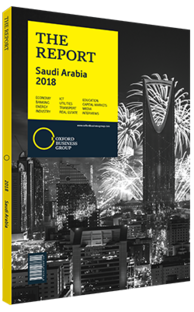Abdulaziz Al Boug, CEO, Tawuniya: Interview

Interview: Abdulaziz Al Boug
How will the introduction of tighter regulations impact the operational models of Saudi insurers?
ABDULAZIZ AL BOUG: The regulated insurance market in Saudi Arabia started in 2003 with the issuance of the Law on Supervision of Cooperative Insurance Companies. The Saudi Arabian Monetary Authority (SAMA) is taking an active role in the industry, and this is helping to lead the market towards higher levels of maturity and improvement.
Insurance companies are now basing their operational models on customer centricity, innovation and high standards of service, which will ultimately lead to greater market stability, fairer competition and best practices. I expect the motor and medical segments, which account for 84% of the overall market, to experience greater density and penetration, which will benefit the industry as a whole.
What initiatives is the industry implementing to meet the new Saudiisation requirements?
AL BOUG: Saudiisation is one of the main objectives in the sector and rates increased to 62% in 2017, compared to 58% in 2016. At Tawuniya we have managed to achieve around 80% of workforce Saudiisation. The regulator is now aiming to fully Saudiise retail insurance sales jobs. To support the new policy, SAMA is launching initiatives such as annual insurance career days, and Saudiisation recruitment and training programmes. From the perspective of the industry, there are three factors of central importance that will make insurance jobs more attractive to Saudi nationals.
First, we need to promote better career development benefits. Second, professional training initiatives, such as our Fast Track Insurance Technical Programme and Middle Management Development Programme, should help to attract prospective employees. Third, we need to convey the message that secure jobs are a strong feature of our industry.
To what extent can Vision 2030 support the growth of relatively subdued insurance lines?
AL BOUG: Vision 2030 opens up new economic sectors for growth and expansion. Among these, the target to increase GDP contribution of small and medium-sized enterprises from 20% to 35% is an exciting opportunity for insurers since the segment will grow exponentially. In addition, infrastructure projects and mega-projects in civil aviation, airports and renewable energy can positively influence the insurance sector in general, as well as the property and casualty segment in particular.
How are enforcement initiatives expected to improve motor insurance penetration?
AL BOUG: Only 45% of the motor vehicles in Saudi Arabia are insured at present; therefore, a full enforcement of the compulsory regulations would more than double the current compulsory market size. We are implementing awareness campaigns to raise coverage and move from compulsory vehicle liability insurance to comprehensive insurance. In order to achieve this we offered competitive prices for comprehensive customers, applied no claim discounts and loyalty discounts, and successfully launched an instalment service.
Additionally, we are aiming to increase motor insurance penetration by matching the period of compulsory vehicle liability insurance to the period of a vehicle’s registration permit.
Lastly, the new law that was recently introduced allowing women in Saudi Arabia to drive will mean 7m women between the ages of 20 and 54 will be potential motor insurance customers, which constitutes a notable addition to the market. We estimate motor insurance policies will increase in the second half of 2018, especially for comprehensive products, while coverage of this new market will also rise gradually in the next three to four years.
You have reached the limit of premium articles you can view for free.
Choose from the options below to purchase print or digital editions of our Reports. You can also purchase a website subscription giving you unlimited access to all of our Reports online for 12 months.
If you have already purchased this Report or have a website subscription, please login to continue.

